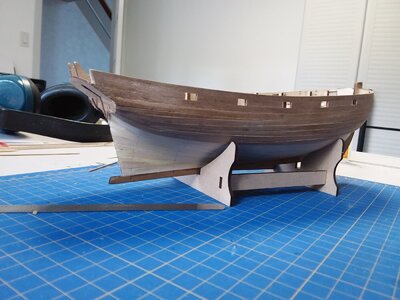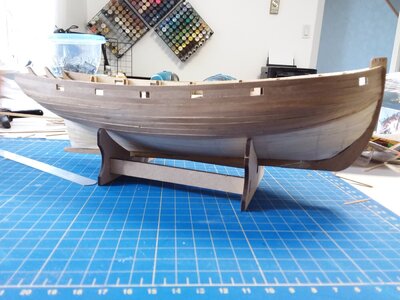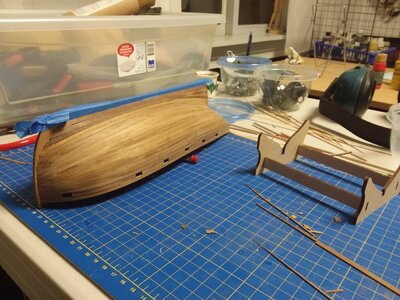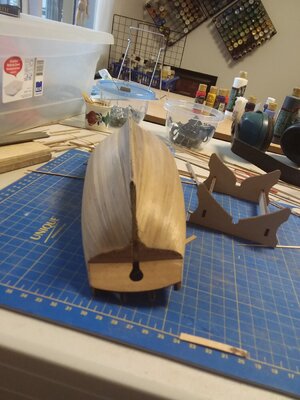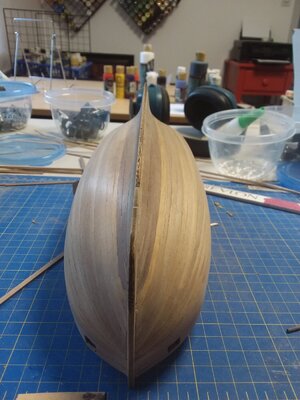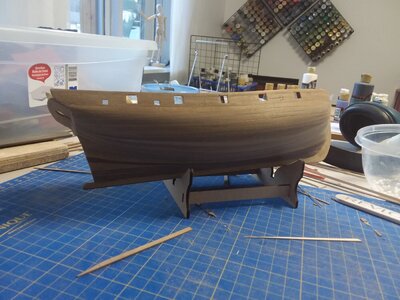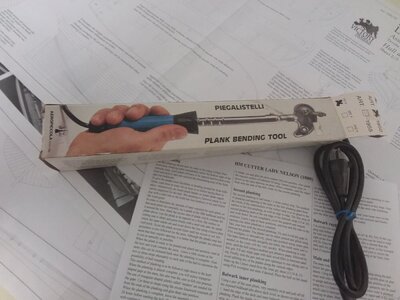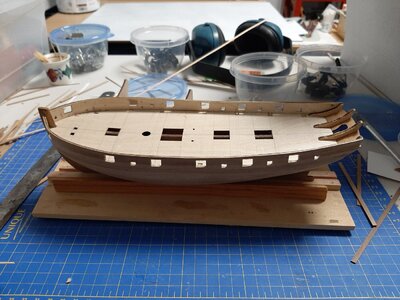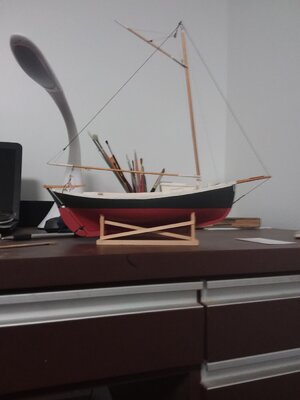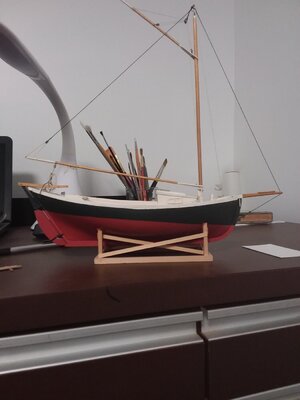Lower transom is planked and shaped, which is quite a small area. Three out of four bulwark planks on each side are in place. I tried a few different ways in trials to curve these laterally before I attached them. The best seemed to be to soak them in quite hot water for an hour, then clamp them to a board with a bend in excess of what I'd need. After drying overnight, they sprang back somewhat, but fitted in place fairly easily. I bent them in the other plane using th Amati Form-a-Strip, with the blunt side of the blade showing. That worked fine.
I tried to use the Chuck Passaro (sp?) method where he clamps the plank, bent laterally, and heated with a hair dryer. When he does it, the plank is now bent. When I did it, and I gave the plank lots of time, it sprang back totally straight. This is 1x4 mm walnut. No idea why.
Finally, for glue, I did not use the contact cement as I was concerned about the need for exact initial placement, so I used the dot/dash method where you start with a dot of CA 10 second gel, then a line of 10 minute LePage's Express Quick Dry Glue. It let me get everything in position and 10 seconds at each CA "tack", clamp the PVA glue area, next dot, next dash, etc.
I happened to be in a Lee Valley store a week ago and picked up a BabeBot for applying glue. I was impressed, it gave me great control in how much and where to apply the LePages. The bottles it comes in have huge slots and you can easily dump WAY too much, so you have to use an applicator of some kind otherwise. The more handling of glue, the better odds of getting some where you don't want it, I figure. So I like the applicator.
It seems to me that the outboard stern counter frames should maybe have been installed a bit further aft and the surface that supports the stern fascia faired like a bulkhead, but once everything is installed there will be just a small triangu gap on the inboard face against the fascia, which I can just fill with filler before painting. I will show how this works when I get to it, probably the next step, although I am debating whether to put the stern fascia on now or when all the planking is on. It could get damaged. The instructions required that it be in place already, but that would have meant teiming the bulwark planks to their exact length before attaching. I can't see any benefit to that!
View attachment 189764View attachment 189766View attachment 189765
 .
.


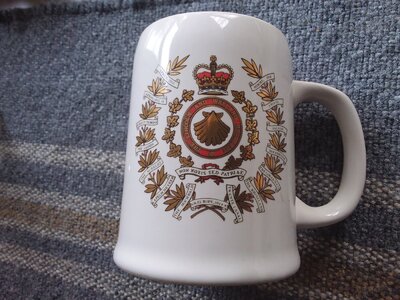

 , but would be almost $100 can
, but would be almost $100 can